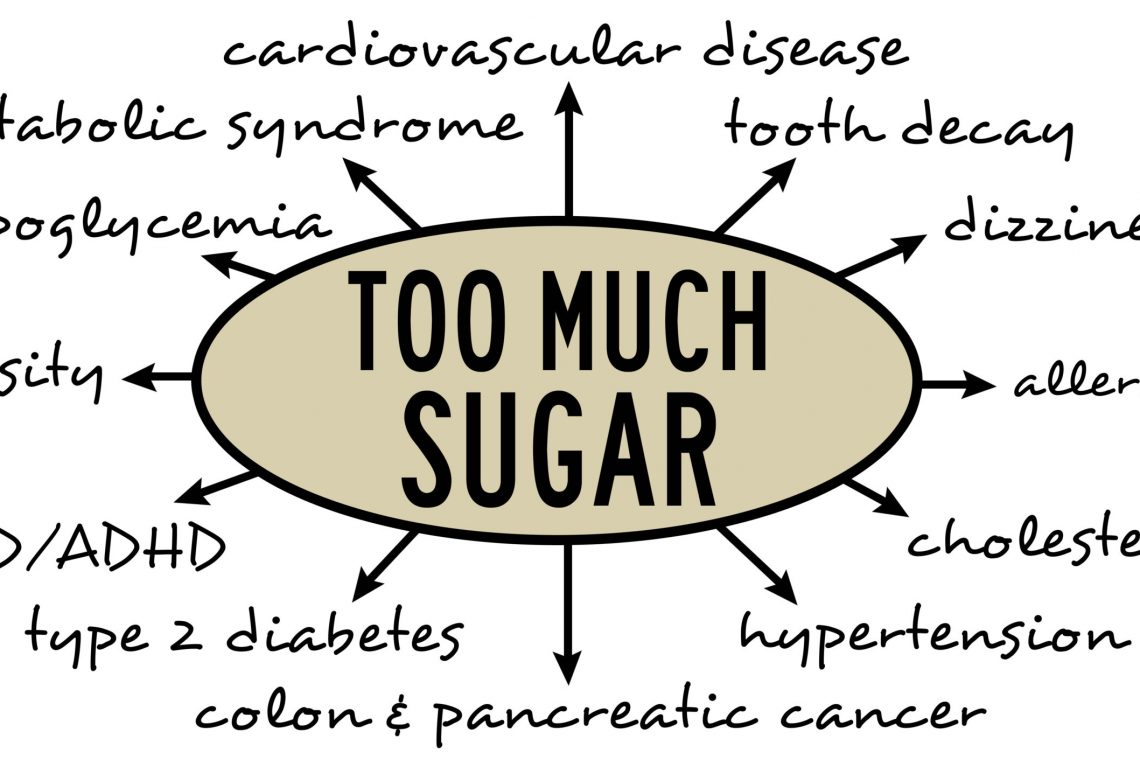Sugar is Stored as Fat
Our body uses both natural and refined or added sugars for energy.
But when we consume them in concentrated amounts, all of that sugar can’t be used immediately, and it’s stored in our body as fat.
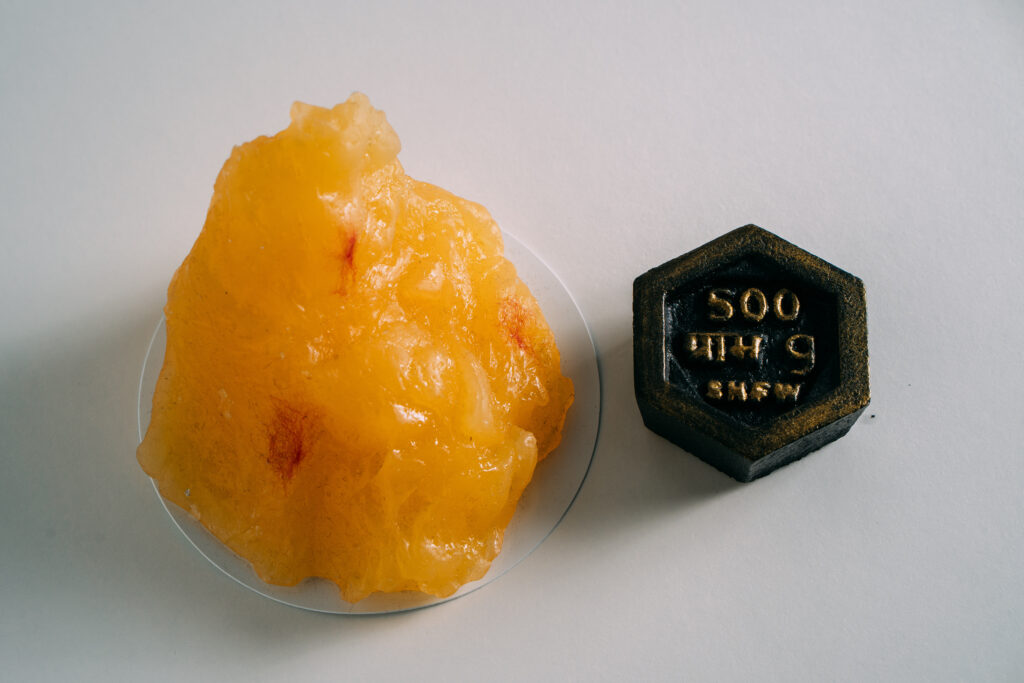
Yes, your body will turn sugar into fat!
This can put you at a high risk of some serious health conditions.
But here’s the thing, it’s not your fault!
You probably just don’t realize how much sugar you are consuming.
It’s essential to be more aware so that you can manage the amount of refined sugar you consume.
How Much is Too much?

Regular sugar consumption can cause blood sugar fluctuations, blood sugar imbalance, changes in energy levels, a drop in immune function, and a heightened risk of chronic disease.
Most Americans have one or more chronic disease.
And, diet can play an essential role in managing these including obesity, heart disease, stroke, type 2, diabetes, high blood pressure, and even some types of cancer.
The standard American diet is SAD because it contains too many calories, too much saturated fat, sodium, and added sugars.
When you think of sugar, you probably think of table sugar, which is sucrose.
But sugars are actually categorized into two sources in our food.
Natural Sugar vs. Added (Refined) Sugar
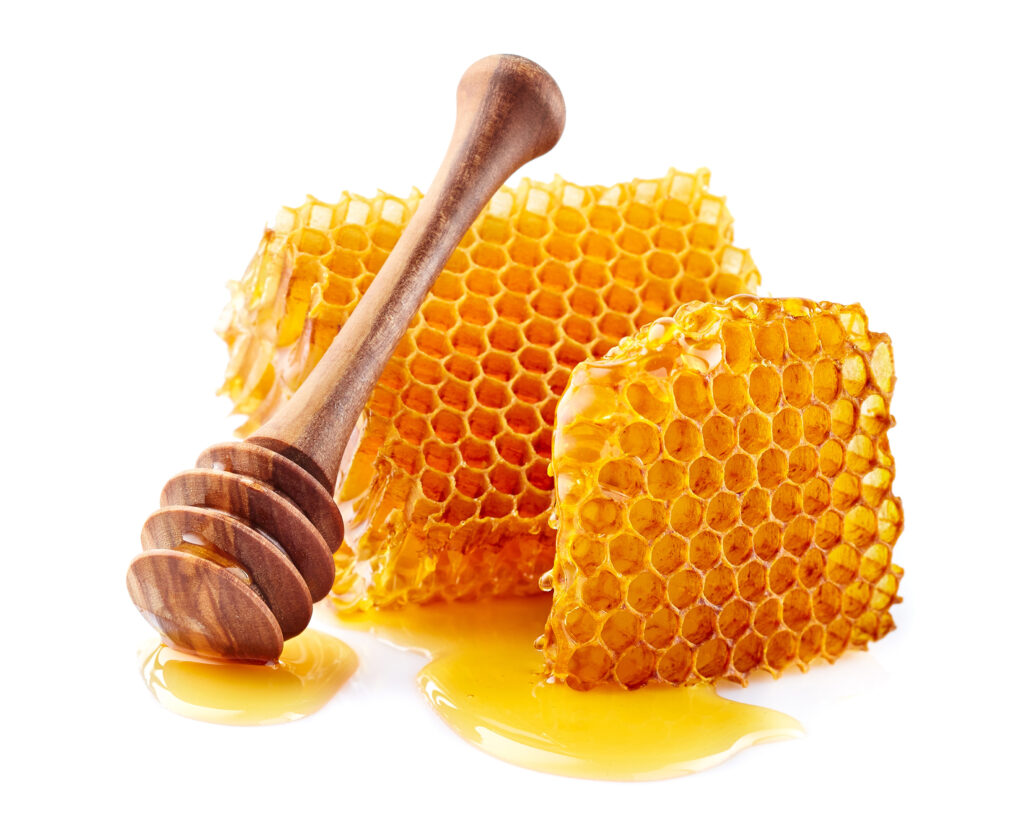
Natural sugar is the kind that occurs naturally in foods, like the kind in a banana.
Those kinds of sugars are accompanied by vitamins, minerals, antioxidants, and fiber.
Regular consumption of fruits and vegetables can improve your energy levels, decrease the risk of chronic disease, and increase immune function, even though they contain sugar.
So let’s keep it simple:
- Naturally occurring sugars are part of the carbohydrates in fruit, vegetables, and unflavored dairy products.
- Added sugars are any type of sweetener added to food, storing processing such as adding sugar to cereal, flavored, yogurt, pastries, or beverages such as soft drinks and energy drinks.
Refined Sugar
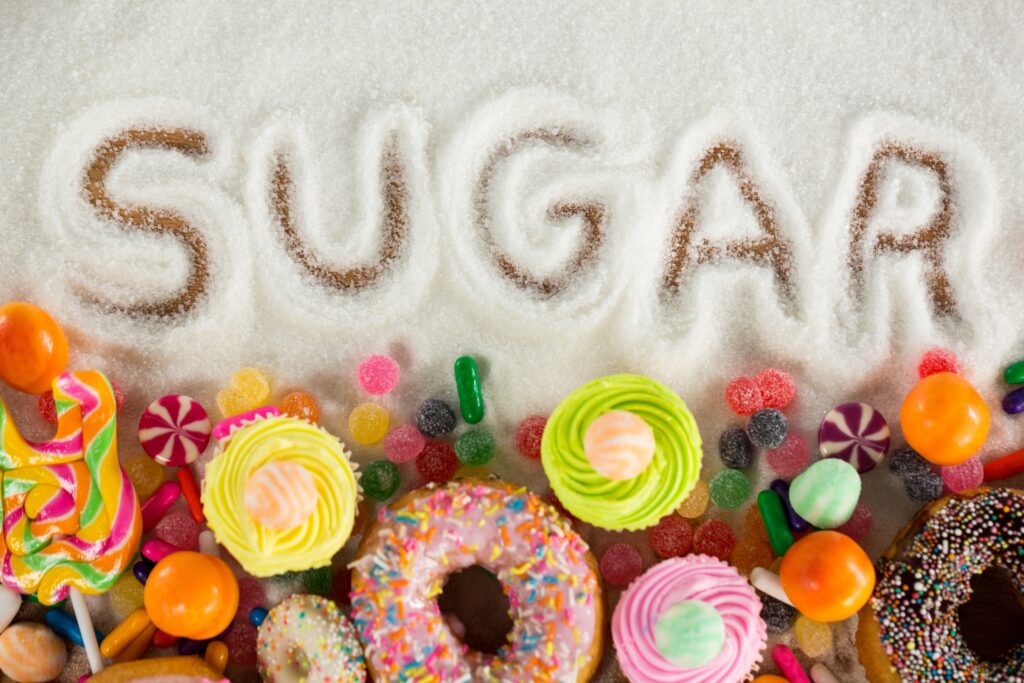
Added or refined sugars typically originate from sugar cane and sugar beets.
But they are sometimes derived from grains, like corn such as high fructose corn syrup.
Refined, sugar is added to sweetened products like beverages, cakes, candy, cereal, and bread.
Yes, even bread!
Table sugar or sucrose is just one of many types of refined sugar.
Added sugars also include syrups and honey, as well as sugars from concentrated fruit or vegetable juices that are beyond what would be acceptable from the same volume of 100 fruit juice.
You’ll see sugars such as brown, sugar, corn, sweetener, corn syrup, dextrose, fructose, glucose high fructose corn syrup, honey, lactose malt syrup, maltose, molasses, raw sugar, sucrose, sugar, evaporated cane juice, and concentrated fruit juice, itemized on food ingredient labels.
We also add sugar to our foods at home, such as adding a teaspoon of sugar to your coffee or when we spread jam or jelly on toast, pouring maple syrup on pancakes, or adding honey to a smoothie.
Often when we add this sugar, it’s totally unnecessary.
Take the case of the smoothie for example, there’s plenty of natural sugar from the fruit already.
Why would you need to add honey to sweeten it even more?
Sugars that occur naturally in foods, including sugar and fruit, and milk, are not considered added sugars.
Nearly 70 percent of added sugars are found in the following categories:
- Sweetened beverages
- Desserts and sweet snacks like cakes, cookies, and pies
- Sweetened coffee and tea
- Candy and sweets
- Breakfast cereals and breakfast bars
According to the American Heart Association, milk products such as ice cream and sweetened milk also contribute to the consumption of added sugar, so it’s best to avoid flavored yogurt and stick to plain, preferably organic greek yogurt.
Also, just steer clear of chocolate, milk, and even plant-based kinds of flavored kind of milk.
Sweetened Beverages

Sweetened beverages, not including coffee, are responsible for roughly one-third of total beverage consumption in the united states and contribute around 30 to 60 percent of added sugars to the diets of young children, adolescents, and adults.
These sweetened beverages include soft drinks, sweetened fruit drinks, energy drinks, sports drinks, and enhanced waters are associated with obesity and being overweight, type 2 diabetes, heart disease, kidney disease, tooth decay, cavities, and gout.
So make your beverage of choice just plain water!
Other Sources of Added Sugar

Refined sugar can also show up in various foods, such as Chinese, chicken salad, barbecue sauce, ketchup, hamburger buns, bacon, and even salad dressings.
Yes, salad dressings.
Because most people consume way more sugar than they realize, it’s essential to be mindful of what you’re consuming.
We don’t need added sugar for our bodies to function correctly.
So, remember to read the ingredients on the food nutrition labels.
How Much Sugar Are We Consuming?

90 percent of Americans currently consume more than six percent of their daily calories from sugar.
Medical News Today, estimates that the average American consumes around 82 grams of sugar per day.
That’s nearly 20 teaspoons of sugar!
According to the USDA Economic Research Service, the average child under 12 consumes 49 pounds of sugar per year.
That’s a lot of sugar!
When it comes to infants and toddlers, a study published in the Journal of the Academy of Nutrition and Dietetics in 2019 showed that 84.4% of infants and toddlers consumed added sugars on any given day.
A more significant proportion of toddlers (98.3%) consumed added sugars than infants (60.6%) based on a nationally representative sample of infants and children up to age 2 years from 2011 through 2016 from the National Health and Nutrition Examination Survey.
According to the research, top sources of added sugars for infants were yogurt, baby food snacks/sweets, and sweet bakery products like cookies or cakes.
Top sources among toddlers were fruit drinks, sugars/sweets like candy, and sweet bakery products.
So your kids are probably getting more sugar than you know, and possibly even more sugar than you are consuming!
How Much Sugar Should you Be Consuming?
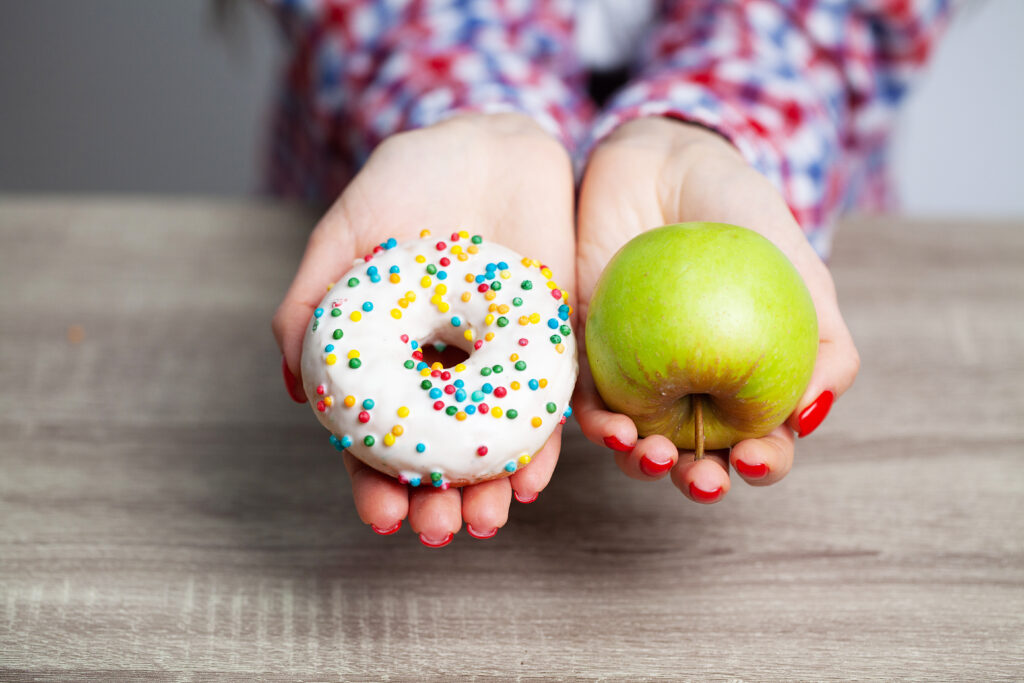
This latest report, which came out in August, limits added sugar to only six percent of calories.
And, the American Heart Association recommends reducing the amount of added sugars to no more than half your discretionary calorie allowance.
Practically, what this means for most women, will equate to 100 calories per day or about six teaspoons of sugar.
Not tablespoons – TEASPOONS, which is less than you realize.
And, for most men, this will equate to 150 calories a day or about nine teaspoons of sugar.
For children between the ages of 2 to 18, the recommendation is no more than 100 calories a day, which is six teaspoons of sugar. AND, also drink no more than one eight-ounce serving of sugary beverages a week.
Children under the age of two should not be consuming any added sugar at all because the first 24 months of life are critical for growth and brain development, which means that nutrition needs are higher than at any other time.
The timing and type of complementary foods influence nutritional status, growth and body composition, neurocognitive development, and various health outcomes, both short-term and long-term, including overweight or obesity, cardiovascular disease risk factors such as blood pressure and cholesterol levels, bone health, risk of food allergies, and atopic diseases.
After age 6 months, complementary foods are needed to ensure adequate nutrition and growth and expose infants to varied flavors, textures, and types of foods as they transition to family diets.
Avoiding added sugars for infants and toddlers younger than age 2 years is essential for several reasons:
- Limiting added sugars to just six percent of total calories can lead to improved health.
- Sugars increase calorie consumption, which contributes to obesity and contains no essential vitamins or minerals that we need for good health.
- Consuming foods high in added sugar will crowd out more nutrient-dense foods.
Research shows that the types of foods that toddlers eat dramatically influence their food patterns and choices in later childhood and when they are adults.
One study demonstrated that the odds of consuming at least one sugar sugar-sweetened beverage per day was 2.2 times higher among 6-year-olds who had consumed any sugar sweetened drinks before the age of 1, compared with 6-year-olds who had never consumed sugar-sweetened beverages before age 1 year.
If we want to encourage toddlers to grow up enjoying a healthy diet low in added sugars, we need to start when they are young.
Just consider the difference between eating an apple and a pastry. The apple contains vitamins, minerals, fiber, and no added sugar.
But the pastry is high in added sugars.
Limiting the number of calories that we consume from added sugar leaves more calories available for nutrient-dense foods.
In other words, swap out the sugar for a higher volume of more healthy food.
In many cases, you can actually also improve your heart health simply through a healthier diet.
How Much Sugar is In a Can of Coke?

Soft drinks are incredibly high in sugar, and many of us, don’t realize because we’re drinking and not eating them.
To figure out how many teaspoons of added sugar are in your food, just read the nutrition label and find the number of sugar grams in the product.
For example, a 12 ounce can of Coca-Cola, a single serving size, packs 39 grams of added sugar.
To find out how many teaspoons, that is, divide the number of grams by four.
In our example of Coke, that’s equal to 9.75 teaspoons, which is more than the current recommendations for men, women, or children for an entire day!
In comparison, an apple contains 12 grams of fructose per serving, and a serving of strawberries contains only four grams, which is a teaspoon,
In those cases, it’s not added sugar – it’s natural sugar.
So, you would need to eat more than three apples or nearly 10 cups of strawberries to equate to the amount of sugar in a single serving of Coca-Cola.
Did you have any idea that there was that much sugar in a can of Coke?
Why Limiting Sugar is Critical

When you gain weight, often resulting from overeating sugar, it can prevent your liver from functioning correctly because your organs become trapped by fat.
Diseases such as fatty liver disease can increase your risk of diabetes, cancer, heart failure, and other conditions or diseases.
Changing your diet to avoid sugar and other fatty foods can significantly reduce your risk while helping you live a healthier lifestyle.
If you’re worried about appearing older, developing blemishes, or keeping a more youthful appearance -quitting sugar can really help you along.
Other factors, including how much water you drink, can play a massive role too.
The food you consume also plays a significant role in your health.
Decreasing your sugar intake can improve your skin and even save you money. Because you may discover that you actually don’t need all those skincare products.
Added sugars do not contribute nutrients, yet they still contribute calories that can lead to extra pounds and obesity, which reduces heart health.
Think of your daily calories as a budget.
You want to spend most of your calories on essentials to meet your nutrient needs, so skip soft drinks.
Simple Swaps
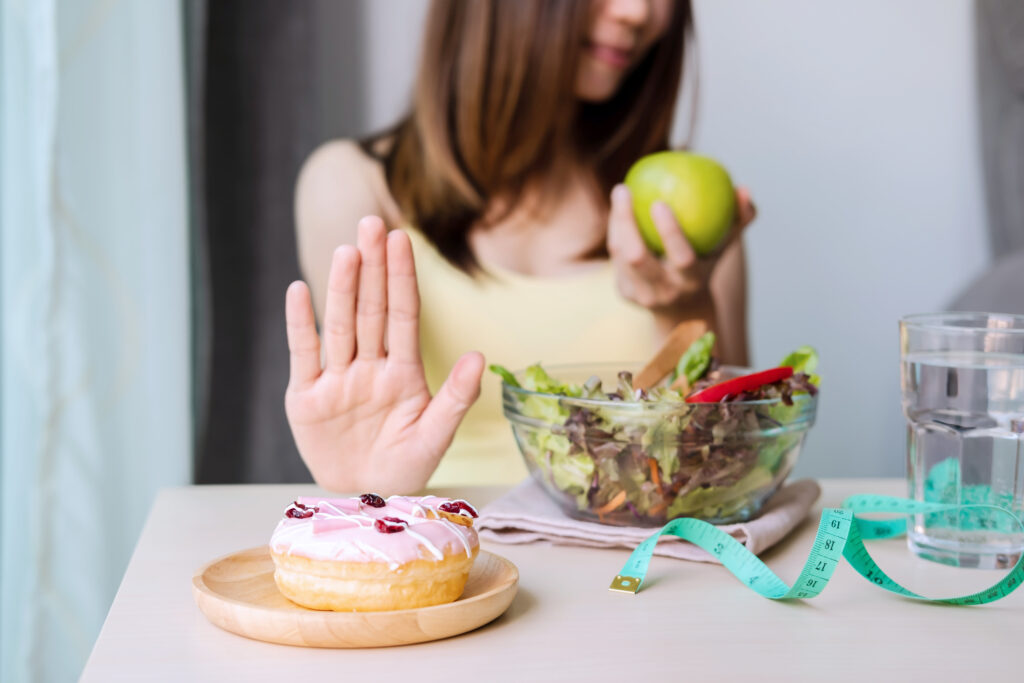
Choose unsweetened beverages such as plain water.
Skip the sugar in your coffee or tea.
Look for cereals without added sugar.
Read the nutrition labels carefully.
Instead of cookies or candy, choose fruit for a snack.
Avoid flavored varieties of milk. Instead, just enjoy plain unflavored, unsweetened organic milk.
Steer clear – far away – from highly processed foods.
A healthy diet with optimum amounts of vitamins, minerals, fiber, beneficial types of fats and proteins is crucial for infants and toddlers younger than age 2 to support growth and development.
Use these tips to give your young children the healthiest diet and a head start for good lifelong nutrition:
- Instead of sweetened drinks like lemonade or fruit drinks, offer milk or plain water.
- Try fresh fruit or fruit canned without added sugar for desserts instead of cookies.
- Add unsweetened applesauce or mashed banana to plain yogurt instead of purchasing sweetened yogurt.
- Babies don’t need sweets and snacks commonly marketed to infants. Instead of these sweet foods, offer your baby more baby food vegetables and fruits without added sugar.
Conclusion

If you’re looking for reasons to avoid eating sugar, look no further!
And, if you were not looking for reasons to avoid sugar, I hope you are now!
There are so many reasons why sugar is better off your diet.
Cutting back on sugar will leave you room for healthier options beyond the most obvious reasons, such as an improvement in weight having more energy.
There are so many other reasons to quit!

